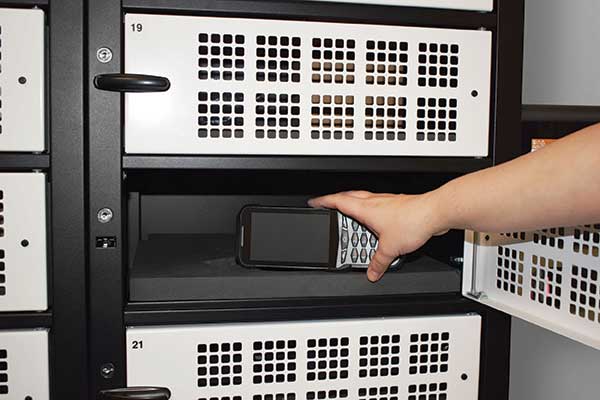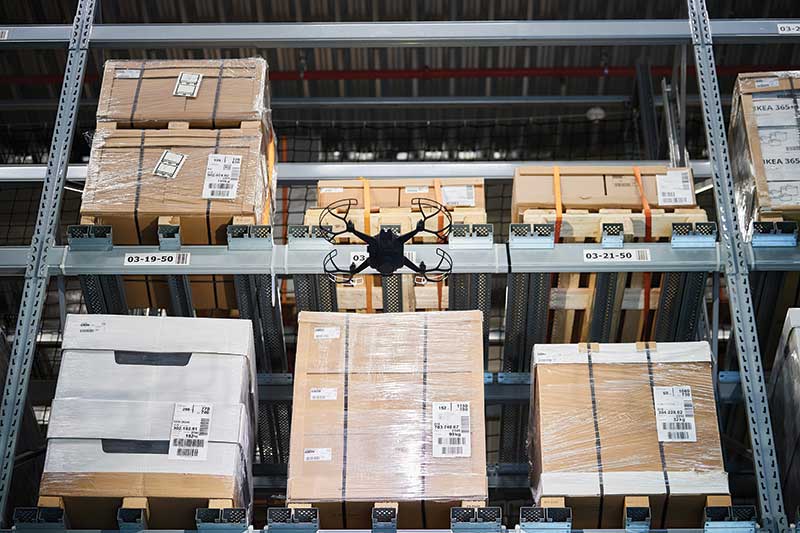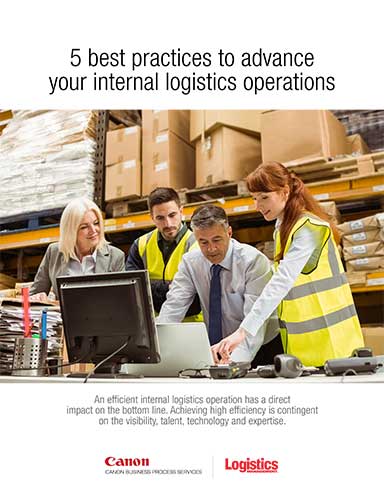Data Capture: Bar coding’s new friends
Bar coding remains the central technology for data capture, with new wearables and handheld form factors to boost productivity. But RFID momentum is building, and a range of real-time location technologies can complement handheld data collection.
The linear bar code, and by extension—manually collected bar code data—is no longer the hot new data capture technology for materials handing in warehouses, manufacturing plants or fulfillment centers.
That doesn’t mean bar coding is dead. Far from it. It just means the humble bar code has a lot of new friends for better tracking of inventory and visibility into processes and the movement of assets.
These allies in data capture include everything from radio-frequency identification (RFID) solutions to autonomous drones that perform cycle counts using on-board cameras. Additionally, in much the same way a fixed position bar code reader captures data automatically, so do many of these newer data capture and sensing technologies, though not necessarily pegged to a specific point in the material flow. That makes understanding these technologies and how they can build on the benefits of bar coding a best practice.
Automatic identification and data capture (AIDC) technologies have advanced in multiple ways, with steadily growing use of RFID, says David Krebs, executive vice president of enterprise mobile and AIDC at VDC Research, but it’s wrong-headed to think that real-time location tracking and RFID will supplant bar coding.
“It’s sort of challenging to pit RFID versus bar codes,” says Krebs. “What we’re seeing is that supply chains that have already made an investment in RFID tagging upstream may look to leverage RFID for efficiencies in warehouse processes.”
Generally, in warehousing, says Krebs, scanning of linear bar codes remains the data capture mainstay, since many manual tasks are system directed to associates by a warehouse management system (WMS). The labels themselves are inexpensive to generate, while the technology is widely understood and deployed. However, adds Krebs, if a warehouse is already receiving products that are RFID tagged upstream, often to help in retail stores, it may make sense to use RFID portals or tunnels to do some fully automated data capture at the DC level at points like receiving.
But for system-directed activity like picking from shelves, bar codes remain effective, helped by advances on the rugged mobile device front, such as improved ergonomics, lighter and more capable wearables, and the fact that many new handhelds and wearables use image-based scan engines that are better at reading from distance than laser-based scanners of years past, notes Krebs.
In warehousing, matching workflows to appropriate handhelds or wearables remains important. “You need to understand what suits the workflow, and what’s going to be best for your workers,” says Krebs. “Then you also need to think about the environmental factors, like how long-range does the scanning need to be, or if it’s a cold chain site, which devices work well in those conditions.”
RFID momentum
RFID has a long history, dating back decades. In the early 2000s, the thinking was that mandates from major retailers would drive rapid adoption of RFID tagging at the item level, but that never materialized at scale.
However, RFID use has steadily increased in retailing, especially for high-value goods, while the technology has progressed. Today, RFID has a more application-driven momentum.
In Zebra Technologies’ 2023 “Warehouse Vision” study, based on feedback from more than 1,400 decision-makers and associates, a majority (58%) indicated they plan to deploy RFID by 2028, with the aims centered on increased inventory visibility and reduced stock outs.
Additionally, says Andre Luecht, Zebra’s global strategy lead for transportation, logistics and warehouse, RFID data capture can be fully autonomous, using setups like scan tunnels or portals that lift trucks can drive through, or overhead readers. This reduces the labor effort that would otherwise be needed for tracking of inventory, if everything was done with handhelds.

“Access to and retention of qualified labor indeed is a key driver here. Making the data collection independent of associates’ capabilities or motivation is a key enabler for process optimization. Accurate and real-time inventory and asset visibility have proven to become a mission-critical component to high performing supply chains. So, accuracy and speed of data capturing are additional contributing factors. Where source-tagging is part of the process, higher granularity of inventory benefits decision making.” ” - says Luecht
On the handheld front, device capabilities have progressed. Luecht notes, for instance, that Zebra’s handhelds can blend multiple data capture technologies in one device. “The latest generation of handhelds and mobile computers can include camera vision, traditional bar code scanners and RFID capabilities. All married to the latest WiFi6 or 5G standards,” says Luecht. “New form factors and new capabilities have made handhelds even more useful than before.”
Fixed-position bar code readers offer another means of fully automated data capture. However, when it comes to bar code data capture in aisles and on the move, rugged handhelds are well suited for that role. “Mobile devices are preferred in situations requiring greater flexibility or to scale data capture operations,” says Luecht.
On the wearables front, vendors now offer lighter Bluetooth ring scanners, or “all-in-one” wearables, that integrate the scanner and compute device into one small unit.
“We see a huge increase in interest in wearable scanners to help give the users a better experience, which in turn leads to better worker retention,” says Jody Costa, vice president of marketing and strategic partnerships for Barcoding, Inc., a provider of automation and AIDC solutions.
Wearables keep associates more hands-free than traditional handhelds, which can save seconds on every scan, notes Costa. Overall, it’s best to work with a partner to find the right devices for the specific workflows, Costa adds, and it helps to gain feedback from frontline workers.
Securing devices with intelligent lockers
Digital access control and audit trailing over activity keeps tabs on critical gear.
Rugged mobile computers and data capture devices need maintenance in a couple of different ways.
One is through mobile device management software that updates and manages firmware and software running on the devices. Another is securing the devices in a safe place.
That latter need is where intelligent lockers come in, says Hector Melendez, technical director for Traka Americas. Traka’s lockers can be used to secure rugged data capture equipment that is often shared across work teams or shifts, while providing a digital audit trail over use of the locker.
“Intelligent lockers allow administrators to know who checked out an asset, when it was removed, and how long it has been out of the system,” says Melendez. “Curfew features and alerts can inform administrators when an asset hasn’t been returned by a certain time, which expedites the process of finding a potentially lost or stolen asset.”
Multiple means of authenticating who can use intelligent lockers are available. With Traka’s models, this includes using a PIN code on the locker’s touchscreen, card credentials or biometric fingerprint. Use of smart lockers also can be combined with radio frequency identification tagging of devices, says Melendez, to provide more detailed monitoring over device use.
Intelligent lockers also can be outfitted with chargers, and Traka also provides Web-based software so oversight of the locker system can be managed centrally. Traka’s software can also integrate to enterprise asset management platforms a company uses to manage overall asset and service history on the gear.
Multiple areas of payback from intelligent lockers, says Melendez, include but are not limited to reduced asset loss. A leading benefit is time savings, both for supervisors responsible for the equipment and for the front-line users.
“Employees spend less time looking for an asset, or finding one that’s charged, or waiting for an asset to be available due to misplacement,” he says. “They can also help with device maintenance since the system allows users to report when an asset has been returned with a fault. A manager can then quarantine the asset until the fault has been corrected. This prioritizes working assets and supports effective maintenance time without confusion over which device needs attention
“Survey and work with your end users directly in terms of technology and automation needs,” says Costa. “What do they need to be more productive and satisfied in their work? And how can new strategies around modernized UIs [user interfaces], hands-free scanning and gamification help retain workers? The businesses that focus on how technology can improve employee job satisfaction and outcomes will win.”
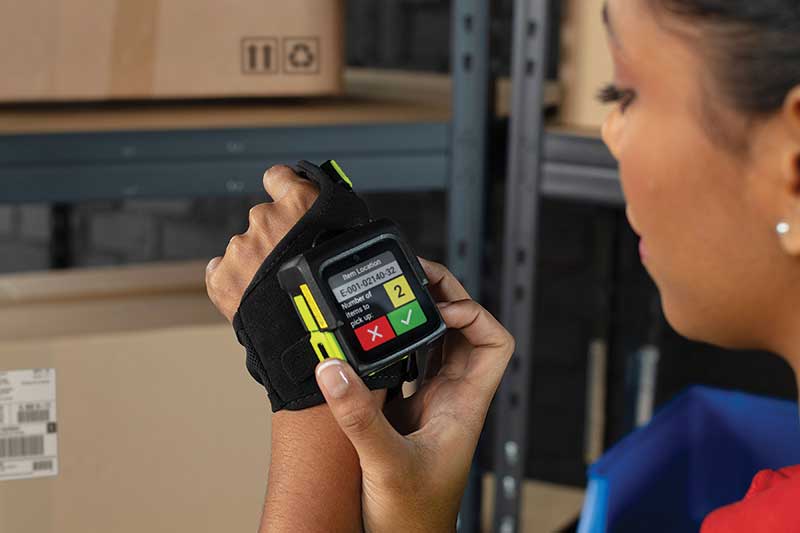
Inventory drones
Another fairly new means of data capture seeing use are autonomous drones outfitted with cameras to scan pallet positions in racking to automatically perform cycle counts.
For example, Verity’s drones autonomously fly through aisles following a digital mapping of the DC, collecting data in three dimensions by scanning bar codes at any height using onboard, high-resolution cameras. This eliminates the need to do cycle counts, and it generates a discrepancy report that can be passed back to a WMS to make corrections.
This benefits productivity in two ways, says Markus Waibel, cofounder and COO at Verity: eliminating a time-consuming manual data collection task, and using correction of issues found by the drones, reducing lost time because a pallet of goods isn’t in the right position. “If you don’t have accuracy in where pallets are stored, and a forklift operator goes out to pick something and it’s not there, then a pallet hunting process starts, which is wasted time,” says Waibel.
Companies using Verity’s drones include DSV, INGKA, Maersk, and Samsung SDS. In practice, says Waibel, the biggest gains come from those deployments where the drones aren’t just automating the inventory counts, but the users are also correcting discrepancies found by the system and highlighted in its software, which can also pass difference reports back to a WMS.
And because the cost of cycle counts with drones is minimal compared to a team doing manual scans, inventory counting gets done much more frequently.
“The drones are very consistent in the way they capture data,” says Waibel. “The incremental cost of more frequent cycle counts is also very low. You can have a very clean warehouse with this solution.”
To date, Verity’s deployments are focused on automated counts of palletized goods in racks, though one company is pilot testing the drones to perform autonomous counting of goods at the item-level. The drone’s cameras are mainly used to capture bar code data, but it’s also possible to use other sensors and technology on them to capture information such as temperatures in different parts of a DC, or using the cameras and some model-based analytics, to detect issues like damage to pallets, racks, or to check for proper gaps between rack structures for sprinkler system effectiveness.
“In the end, the drone serves as a data collection platform, and there are many things one could do with computer vision and sensing to build on top of what they are already used for,” says Waibel.
Blending technologies
Today’s mix of data capture technologies can help a supply chain in tracking inventory, equipment, returnable containers, and ultimately, in gaining better visibility into production or fulfillment processes in near real time, says Bill Wappler, CEO of Surgere, a services and solutions company that applies various data capture and Internet of Things (IoT) technologies for supply chain organizations.
One big change with all the advances, says Wappler, is that more companies are blending data capture technologies to achieve better control and insight, rather than sticking to one technology.
“The word we use to connotate this fusion of technologies is confluence,” says Wappler. “And we see confluence happening not only in what we offer, but in general across industry because confluence can provide a better single look into the reality of all that’s happening.”
Many technologies potentially come into play including RFID, ultra-wideband (UWB) tags, tracking with global position system (GPS) technology and also computer vision, says Wappler. An organization might even use multiple technologies in the same facility, like RFID to automatically capture data on inbound goods, or UWB tags to monitor the flow of inventory or containers.
Bar coding isn’t going away, agrees Wappler, but the real-time locating technologies provide a more continuous stream of information. Think of the new locating technologies as providing a window into the actual flow of processes, rather than a snapshot, he says.
“The conversation on visibility has moved much deeper inside the four walls than it used to be,” says Wappler. “Not only do we want to know if some inventory is in a warehouse or plant, but exactly where it is in the process. For instance, if it’s a container of components headed to a manufacturing line, we want to know the exact time it hits that line. The ability of various technologies to paint that picture is just much better than it ever has been.”
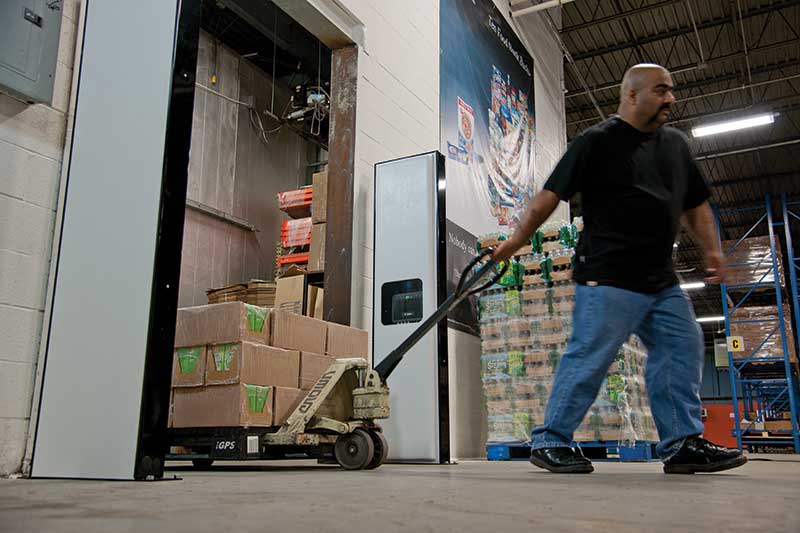
Part of what Surgere does is help organizations choose the right mix of data capture and IoT technologies to apply, but the ultimate value comes from the decision support, adds Wappler. This increasingly goes beyond the days of canned reports to analytics that use artificial intelligence (AI) to glean insights.
Within Surgere’s client base, Wappler says, there’s currently about 15 billion transactions per month. This scale drives the need for AI-enabled analytics. “Because of the amount of data being collected, we’ve had to move beyond report creation to using AI and analytics to provide a system that understands what all this data is suggesting,” says Wappler.
The end game with data capture is to further operational goals, Wappler points out. These goals go beyond providing better estimated time of arrival (ETA) updates.
Companies also want to use the data to help right-size inventory to contain costs without harming service levels, find ways to reduce cycle times, or reduce labor requirements by tweaking layouts or slotting to reduce travel.
“Another reason for this level of tracking is optimizing the flow of work,” Wappler says. “Clients will tell us, ‘Not only do I need to know exactly where something is in my warehouse, I want to know what the usage looks like. Let’s heat map the movement of inventory so I can make a change to the flow to make it more optimal, which might reduce the number of people needed to move product around.”
Newer technologies can build upon the foundation of bar code scanning, vendors agree. For example, inventory drones can automate cycle counts in the racks, but when it comes time to pick orders using lift trucks, typically the operator confirms picks with bar coding, notes Waibel.
Some software vendors are using newer data capture and sensing technologies in ways that differ from how most WMS solutions use bar codes. For example, IndentPro is a warehouse execution system provider that uses 2D LiDAR sensing to optimize the efficiency of lift truck fleet missions. Synkrato’s software leverages RFID and sensing to feed a dynamic digital twin to improve slotting.
Overall, notes Costa, it helps to “embrace change” and assess the potential value of mixing in some newer technologies alongside upgrades to more traditional AIDC, with advice from a partner that isn’t tied to one technology.
“For instance, a business may have item-level bar code-based visibility, and then move to RAIN RFID at the pallet level for shipment verification purposes,” says Costa. “Often, a combination of technologies offers the best solution.”

